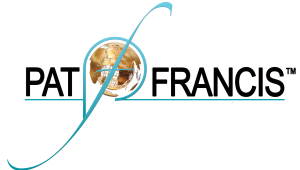It assumes an asset will lose the same amount of value each year and works well for assets that lose value steadily over time. This number will show you how much money the asset is ultimately worthwhile calculating its depreciation. This is a very widely used method, which is of course dependent on the type of the asset and the company rules and policies regarding accounting procedure. The calculation is done by deducting the salvage value from the cost of the asset divided by the number of years of useful life. Salvage value is the estimated amount an asset is expected to be worth at the end of its useful life. Businesses often rely on industry data, past experience, or expert appraisals to determine this estimate.
- It is a systematic approach to account for the reduction in the value of an asset over time.
- Let’s go through an example using the two methods of depreciation described so far.
- To calculate depreciation using a straight-line basis, simply divide the net price (purchase price less the salvage price) by the number of useful years of life the asset has.
- Check out our guide to Form 4562 for more information on calculating depreciation and amortization for tax purposes.
Trial Balance
This represents the anticipated resale value of the asset at the end of its useful life. For instance, if a company plans to sell a machine for parts after several years, that estimated scrap value would be its salvage value. The IRS has categorized depreciable assets into several property classes. These classes include properties that depreciate over three, five, https://soft-ballbats.com/2023/12/13/getting-down-to-basics-with-17/ ten, fifteen, twenty, and twenty-five years.
Calculating with an Example
For reasons http://www.vmeste-so-vsemi.ru/wiki/%D0%A2%D0%B5%D0%BA%D1%81%D1%82_%D0%BB%D0%B8%D1%86%D0%B5%D0%BD%D0%B7%D0%B8%D0%B8_Creative_Commons_Attribution-ShareAlike_3.0_Unported of simplicity and brevity, the depreciation methods demonstrated in this article use only the required arguments. Several of the depreciation functions include optional arguments to allow for more complex facts, such as partial-year depreciation. Straight line depreciation is a widely used method for calculating the depreciation of tangible and intangible assets over time. The method is suitable for various types of assets that have a known useful life. In this section, a few asset types that are suitable for straight line depreciation are discussed.
- This account is paired with the related asset account and its balance is subtracted from the asset’s original cost.
- Using the previous example, after the first year, the equipment’s book value would be $9,000 ($11,000 cost – $2,000 accumulated depreciation).
- The purpose is to show the reduction in the asset’s value over time without removing the historical cost from the books.
- Another example involves a tech company purchasing office furniture for $10,000, expected to last ten years with no salvage value.
- It is calculated by dividing the cost of the asset, less its salvage value, by its useful life.
Financial Consolidation & Reporting
The Eastern Company will allocate a depreciation of $3,200 to all the years of the useful life of the fixed asset. Below is a break down of subject weightings in the FMVA® financial analyst program. As you can see there is a heavy focus on financial modeling, finance, Excel, business valuation, budgeting/forecasting, PowerPoint presentations, accounting and business strategy. While straight-line depreciation is widely used, it has some limitations that make it less suitable for certain types of assets. Using the furniture example, we can see the journal entry the business would use to record each year of depreciation.
This method is named after the section of the tax code that describes it. For most asset types, you can typically choose which depreciation method to use. However, the straight-line method should not be used for certain asset types. Although you cannot depreciate land, you can depreciate some costs for land preparation. For example, landscaping costs needed to prepare land for business use may be subject to straight-line depreciation.
- This tax form and its instructions help you choose the right kind of depreciation for an asset.
- The percentage is then applied to the cost less salvage value, or depreciable base, to calculate depreciation expense for the period.
- At the same time, it does not take into consideration the fact that an asset will likely require more maintenance as it ages.
- Learn financial statement modeling, DCF, M&A, LBO, Comps and Excel shortcuts.
- These alternative methods may better match the consumption of the asset or take into account the asset’s higher usage during its early years.
- Among the various methods, straight-line depreciation is one of the most common and straightforward.
“Salvage Value,” also known as residual value, is http://ifeelstrong.ru/nutrition/vitamins/ingridienty/yagody-boyaryshnika.html?utm_source=recent_posts_sidebar the estimated amount an asset is expected to be worth at the end of its useful life. An asset might have no expected salvage value, meaning it is estimated to be worth zero. “Useful Life” is the estimated period, typically in years, during which the asset is expected to be productive. This estimation considers factors like wear and tear, technological obsolescence, and intended use. The “straight-line” name reflects the consistent annual depreciation charge, which shows a linear decline in value when plotted. It is often considered the default method due to its straightforward nature.
Each year, the book value is reduced by the amount of annual depreciation. Remember that the salvage amount was not subtracted when the depreciation process started. When the book value reaches $30,000, depreciation stops because the asset will be sold for the salvage amount. Unlike SL and UOP depreciation, DDB depreciation ignores residual value until the end of an asset’s life.
